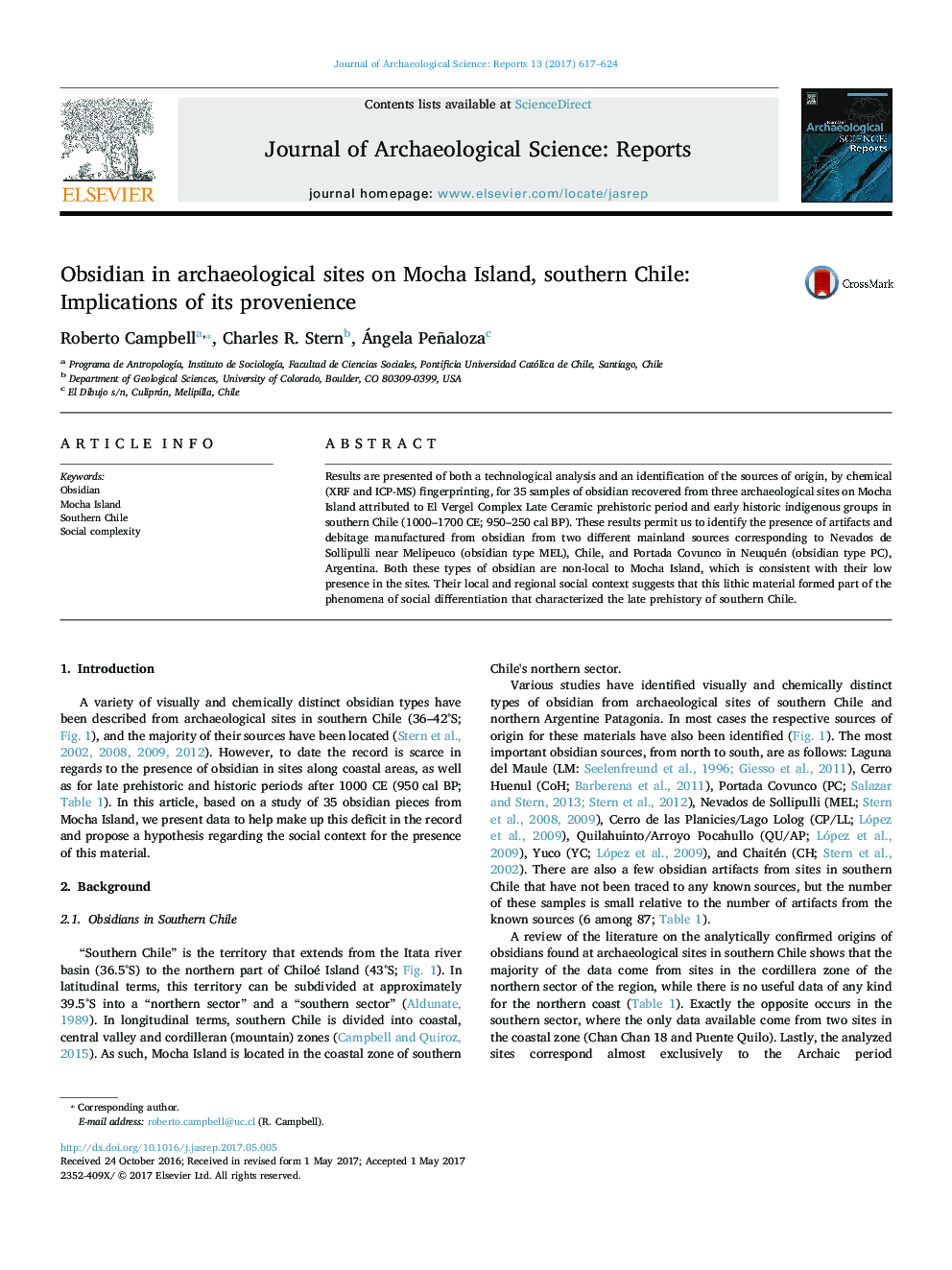| Article ID | Journal | Published Year | Pages | File Type |
|---|---|---|---|---|
| 5112444 | Journal of Archaeological Science: Reports | 2017 | 8 Pages |
Abstract
Results are presented of both a technological analysis and an identification of the sources of origin, by chemical (XRF and ICP-MS) fingerprinting, for 35 samples of obsidian recovered from three archaeological sites on Mocha Island attributed to El Vergel Complex Late Ceramic prehistoric period and early historic indigenous groups in southern Chile (1000-1700 CE; 950-250Â cal BP). These results permit us to identify the presence of artifacts and debitage manufactured from obsidian from two different mainland sources corresponding to Nevados de Sollipulli near Melipeuco (obsidian type MEL), Chile, and Portada Covunco in Neuquén (obsidian type PC), Argentina. Both these types of obsidian are non-local to Mocha Island, which is consistent with their low presence in the sites. Their local and regional social context suggests that this lithic material formed part of the phenomena of social differentiation that characterized the late prehistory of southern Chile.
Related Topics
Social Sciences and Humanities
Arts and Humanities
History
Authors
Roberto Campbell, Charles R. Stern, Ángela Peñaloza,
